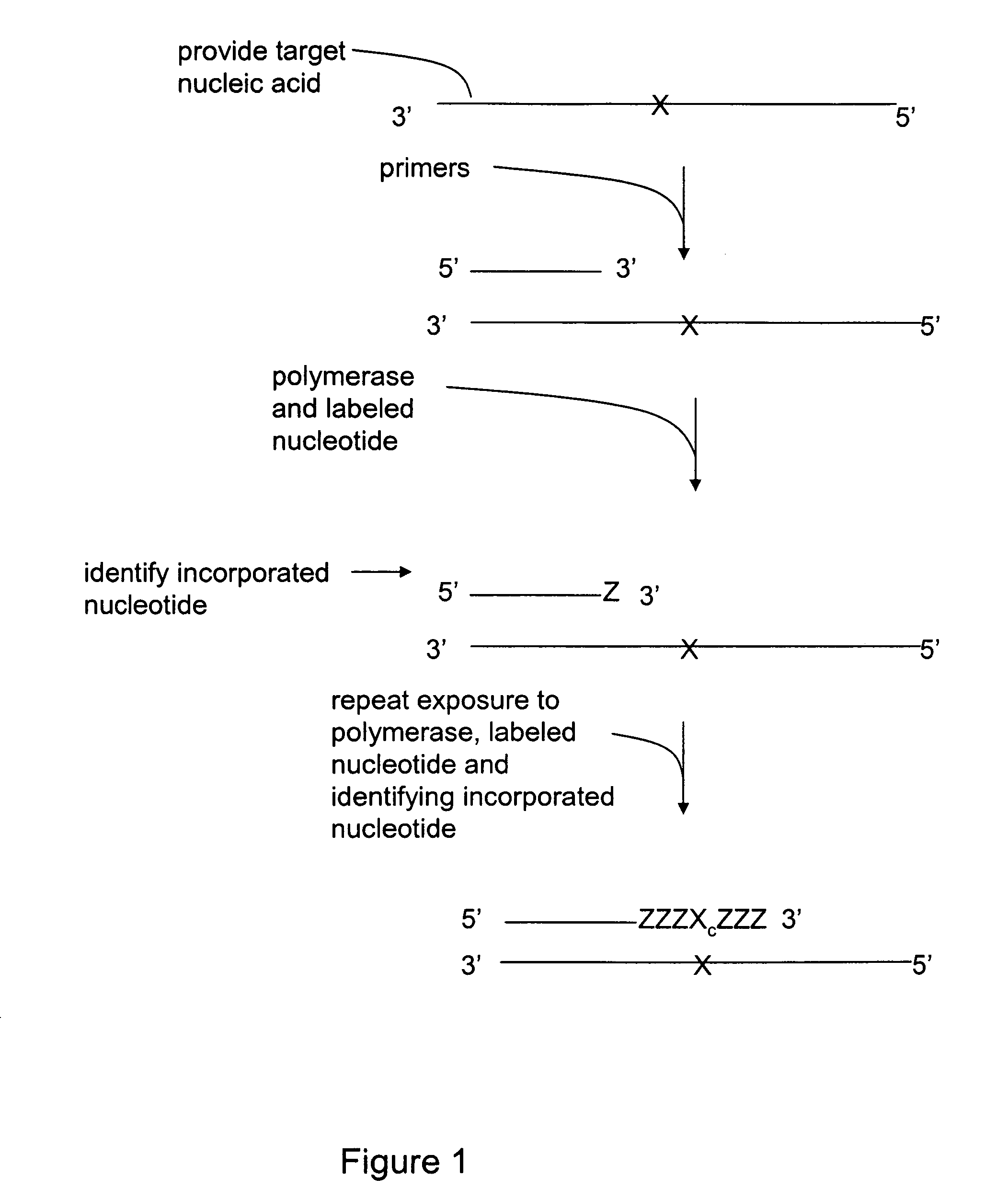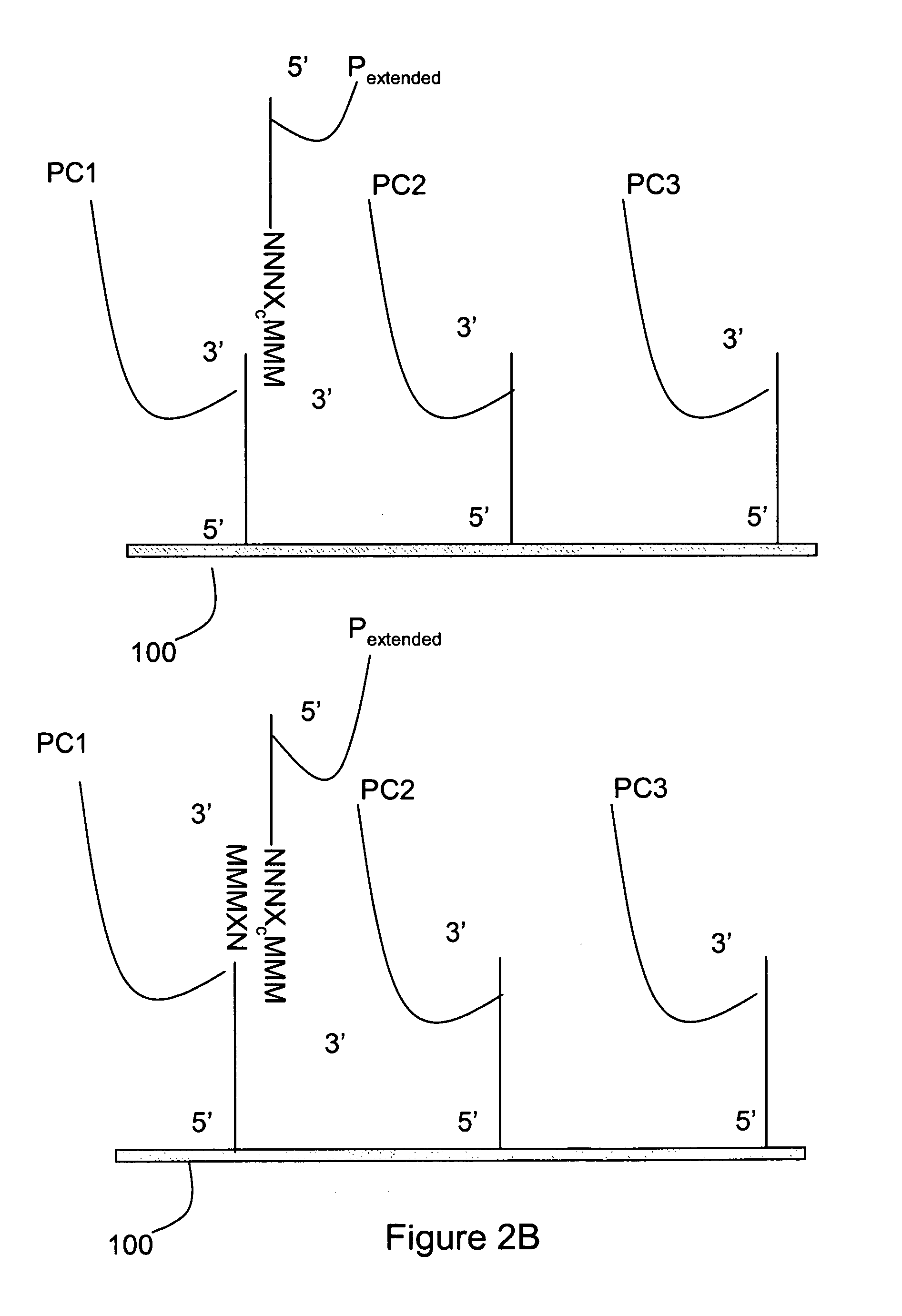Methods for mutation detection
a technology of target nucleic acids and methods, applied in the field of methods for detecting mutations in target nucleic acids, can solve the problems of difficult detection of genetic mutations or other alterations, inability to identify early-stage mutations, and inability to detect certain sample types, and achieve the effect of high false positive rate and greater specificity
- Summary
- Abstract
- Description
- Claims
- Application Information
AI Technical Summary
Benefits of technology
Problems solved by technology
Method used
Image
Examples
Embodiment Construction
[0025]The invention relates generally to methods for detecting the presence or absence of a mutation in a target nucleic acid. The detection methods are particularly suited to single molecule sequencing. The method of mutation detection avoids read-length and accuracy limitations in single molecule sequencing that limit the ability to detect the presence or absence of mutations in a target nucleic acid via single molecule sequencing.
[0026]Single molecule sequencing has the inherent advantage of working directly from genomic DNA, thereby eliminating the need for DNA amplification (PCR). In addition to greatly simplifying the overall sample preparation process, this abolishes the introduction of amplification errors and bias, and ultimately reduces cost. By eliminating amplification, nucleic acid molecules can be closely packed on the substrate, thereby providing the largest amount of sequence information from a given surface area. The entire human genome can be represented on a singl...
PUM
| Property | Measurement | Unit |
|---|---|---|
| area | aaaaa | aaaaa |
| temperatures | aaaaa | aaaaa |
| fluorescent | aaaaa | aaaaa |
Abstract
Description
Claims
Application Information
 Login to View More
Login to View More - R&D
- Intellectual Property
- Life Sciences
- Materials
- Tech Scout
- Unparalleled Data Quality
- Higher Quality Content
- 60% Fewer Hallucinations
Browse by: Latest US Patents, China's latest patents, Technical Efficacy Thesaurus, Application Domain, Technology Topic, Popular Technical Reports.
© 2025 PatSnap. All rights reserved.Legal|Privacy policy|Modern Slavery Act Transparency Statement|Sitemap|About US| Contact US: help@patsnap.com



